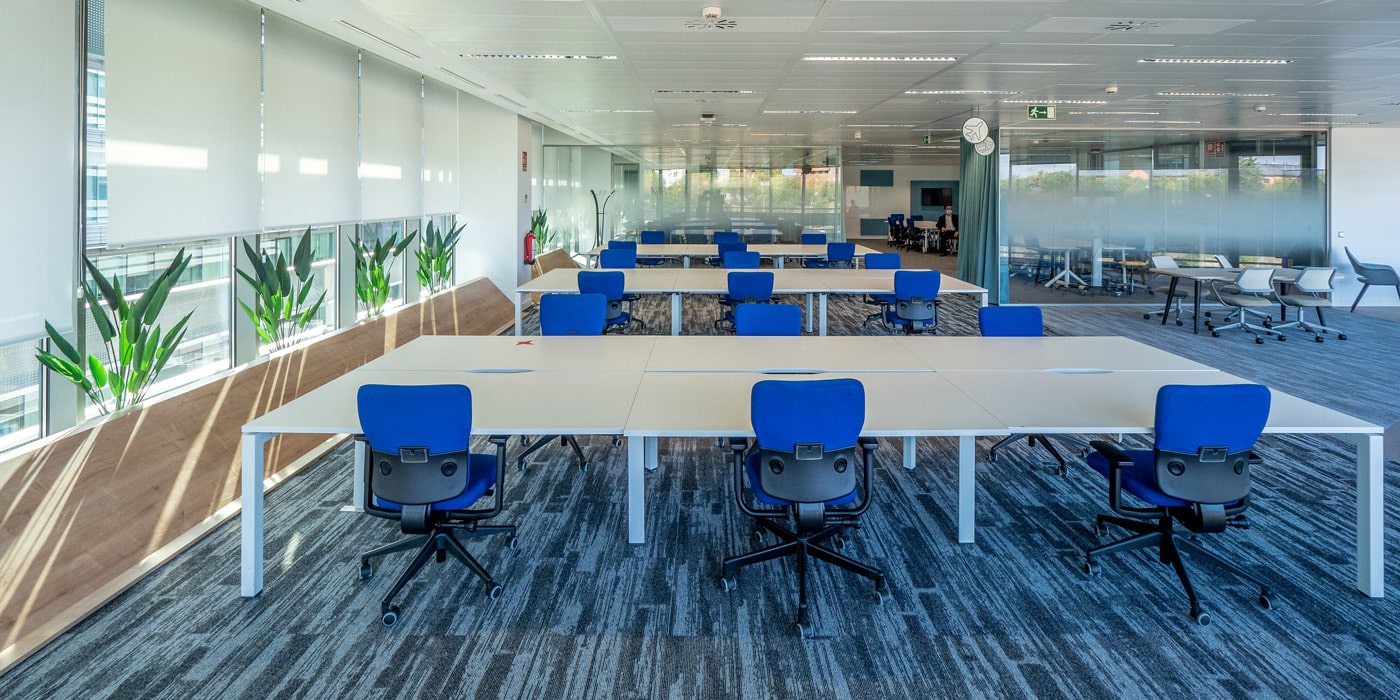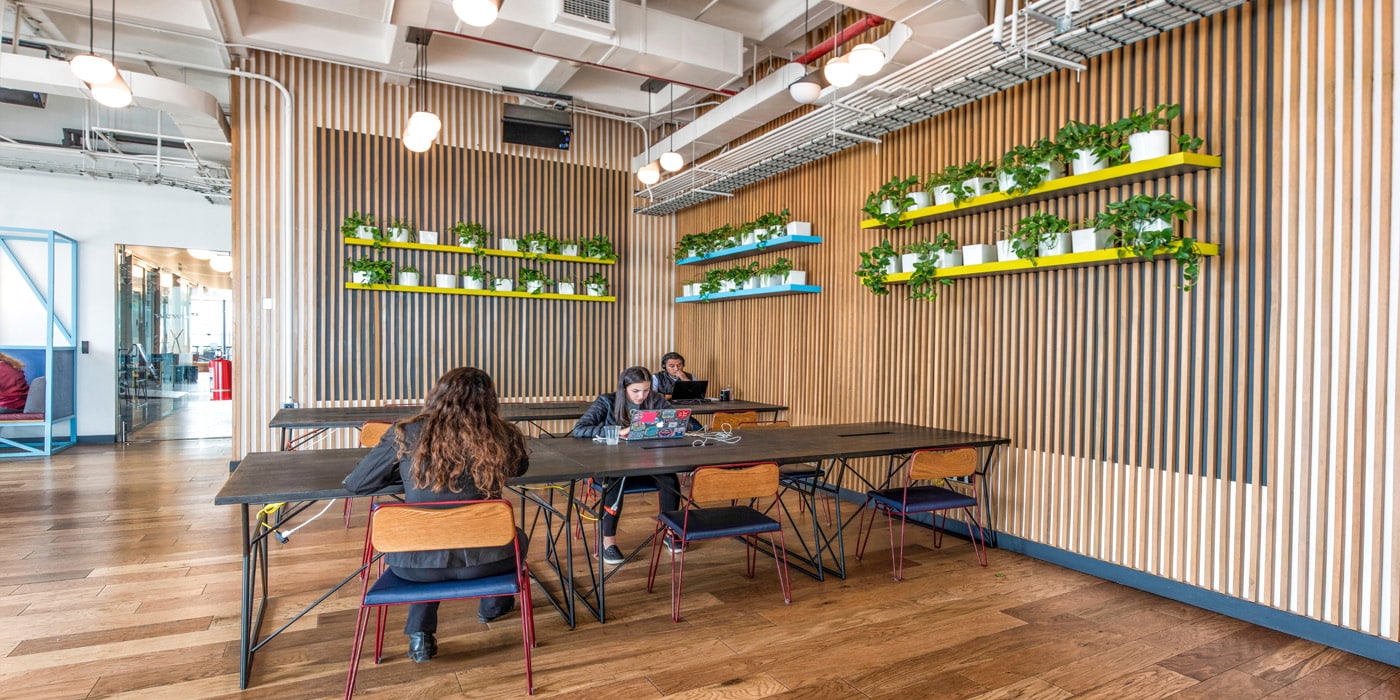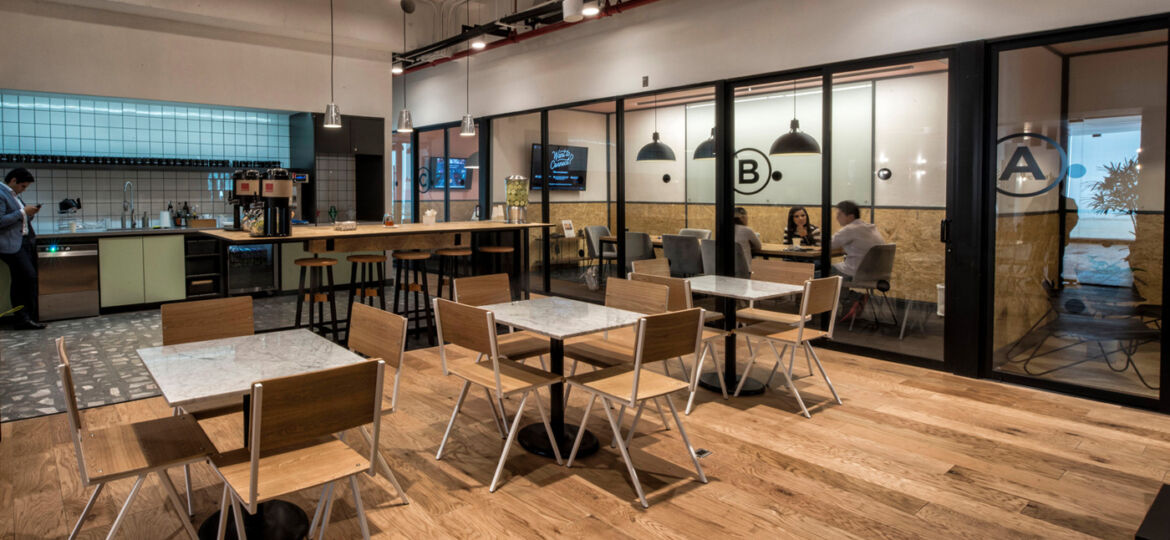Cador, with 43 years in the office market, together with one of its most experienced directors, analyzes the revolution and evolution of the office market, leaving open a vision of the future of workspaces.
In these almost 40 years from the mid-1980s until now, we have all changed a lot, companies, people, and workplaces. We have changed the way we see life both outside and inside the workplace: personal work versus teamwork, pyramidal companies in decision-making versus more transversal companies in the relationship with people and in business decisions.
In the eighties, the concept that prevailed in the design and construction of offices was basically closed spaces, with a number of workstations where people worked according to the space available to the company and not to the space that each employee needed to carry out his or her work, trying to comply with current regulations
The offices were all similar in design. The differentiating factor was the type of furniture used, higher or lower level, as well as the wood finishes in the partitions and the different finishes in the floor coverings. In those years, there were two priorities: acoustic independence and visual independence. Generally, they were blind partitions, which marked the distance from the rest of the workers and served to determine the status of those who occupied them. Concepts such as partitioning finishes, the type of furniture, and the size of the offices differentiated the design of the offices of both large multinationals and SMEs.

Little by little it evolved to interdepartmental collaboration, opening spaces, and making offices only for area managers, generating more fellowship and communication.
At this time, some companies began to have the Internet. From 1985 onwards, multinationals began to introduce it, while SMEs, which are most of the companies in Spain, took a little longer to get it because of the cost it entailed. Thus, we understand that it was not until the 90s that the Internet began to materialize, and it was in 1998 when it began to enter Spanish homes, thanks to the operators, which revolutionized people’s way of life and, above all, the way of working known until then.
Meadows, unassigned workstations, and ecology
Subsequently, the concept of more open areas or spaces in terms of compartmentalization was implemented. The concept of open areas “meadows” was born in New York and is attributed to the Italian architect Gaetano Pesce, who in the mid 90’s designed the first office with this new concept for an advertising company.

At the end of the 1990s, new concepts such as “unassigned workstations”, concentration spaces, and collaboration spaces began to appear, and the office began to undergo a new change. Spaces are becoming more and more open, there are areas for the interrelation of different teams, and at the same time there are areas for concentration.
Technologies accompany these changes: cell phones allow more mobility, the Internet is a source where to get information quickly, and we begin to travel less, because tools such as video calls also allow us to hold meetings between people in different locations, with acceptable communication and certain proximity, with the consequent savings that implied for companies.
Thanks to the technologies, arguments not only of economic saving but also of concern for nature are beginning to take force, appearing in the term “ecology”.
Unfortunately, the evolution of these concepts did not become a reality for certain sectors and to certain more traditional companies, because of the 2008 crisis, until 2014. It is from this moment on all these concepts, as well as others that are not new, such as ergonomics and flexibility, begin to be talked about at the beginning of the 20th century, and are once again being promoted.
Transversal companies, multidisciplinary teams
We have greater access to information; faster communications and we do not need to travel to hold meetings and establish agreements through video calls between many people. All this has also influenced office design concepts and finishes.
Companies have become more transversal and global, so they no longer need so many offices, they need spaces where they can interrelate in different projects, and they no longer work in a unipersonal way but in multidisciplinary teams, even if they are not located in the same building or in the same city. Meetings are held via computer and in different geographical locations. People need to have spaces where they can think, and meet, have different types of furniture depending on the work to be done, and open offices.
Companies are looking more for design and talent attraction, to work on projects globally, rather than individuality. We are entering an era of transparency and flexibility, and offices reflect this.
You may be interested in: Industrialization 5.0 in space construction: Present and future
Wellness, Biophilia and Collaboration
Companies today are looking for maximum flexibility because they must adapt to the times, they live in. New concepts such as “neuroarchitecture” show us the influence of spaces on mental well-being. Natural light also has a direct impact on our wellness and mood.

Also, when designing, we must take into account the materials to be used. We must apply coherence, and simplicity and consider environmental issues. The “biophilia” is to achieve to take nature to the office spaces.
In recent years, companies value interaction with their environment and with companies that can provide knowledge, not only internal collaboration between areas but also synergies with the business environment, which has led to an era of transparency and flexibility in the creation of shared spaces.
These are called coworking spaces. These allow different companies to work together, collaborate and form a community, meeting in the same workspace, and looking for affinities and synergies that allow them to grow.
In short, we have undergone many changes in these almost 40 years in the world of office spaces and this has only just begun. The work of the future will be based on certain fundamental aspects, among which digital ecosystems, new talent management that is increasingly multidisciplinary, and new operating models that combine both factors stand out. The new “gig economy” concept is born, where technology and flexibility are the pillars when it comes to this new hiring model.
Alberto García, Director of Cataluña and SSGG


